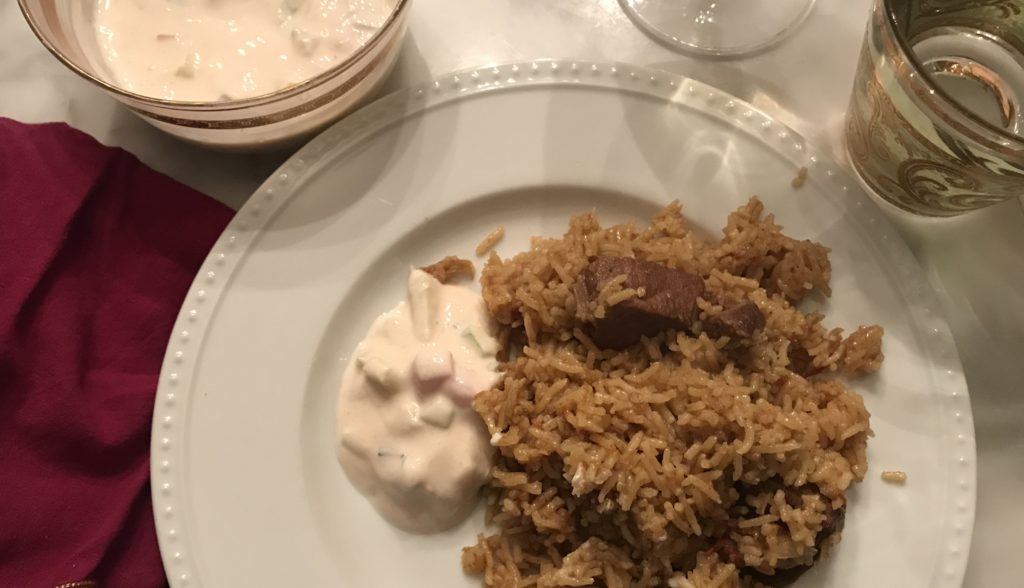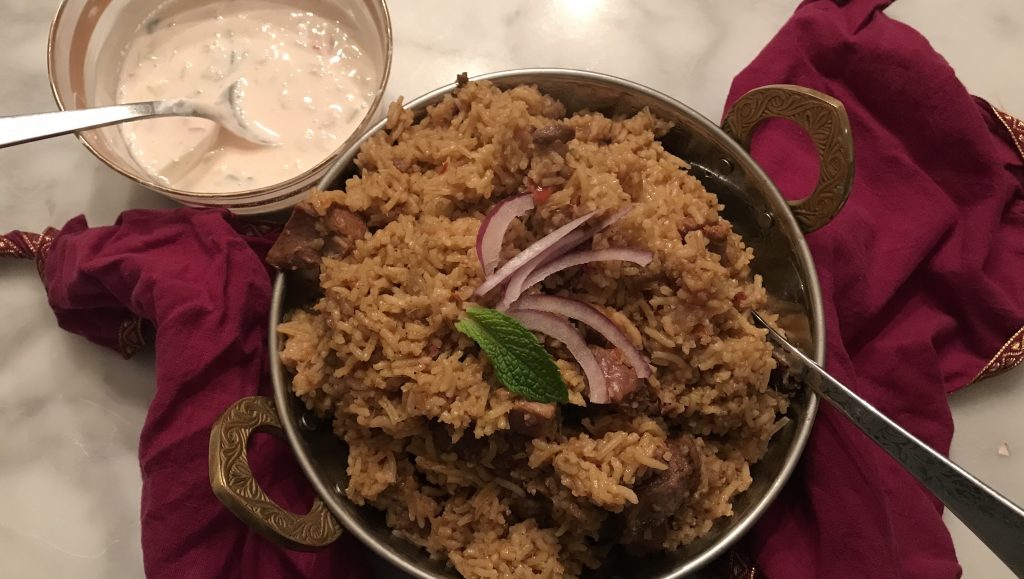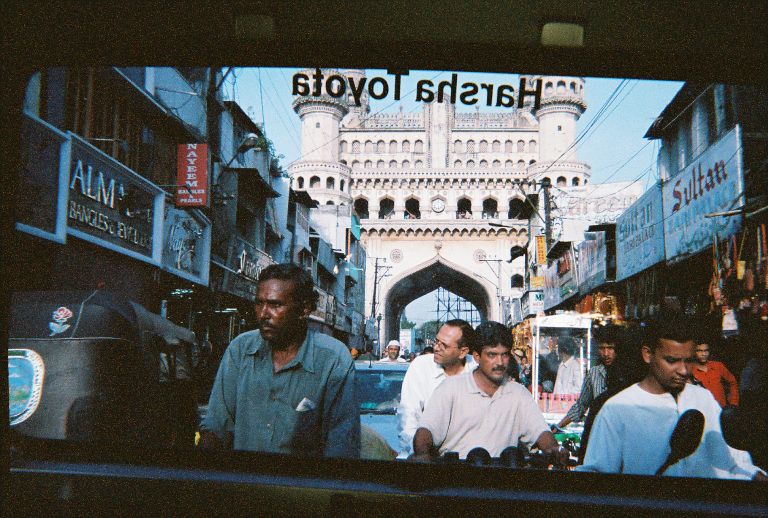Biryani is of course nearly synonymous with Hyderabad. The song Despacito, is not. Or, it wasn’t, until it was, for us anyway, as of August 2017.
story
Say what?
Part of what lead me to start Cultures Capsules was my desire to offer existence beyond boxes. Letting music flow between genres, and people self-identify in boxes of their own definitions. When it comes to food, too often authentic is used to describe what is actually traditional (i.e. the way something has been made for years).
The Indian food I cook is authentic to my family. Some of it is traditional in my husband’s family, and some of it is traditional on a wider scale, but it is all authentic Indian food.
This portrait shows that in food, music and stories, particularly through the eyes or our multi-racial, globally exposed children
Two cases-in-point:
When your 5 year old, half-indian son hears Despacito and thinks of India.
and
When your 7 year old half-Hyderabadi daughter asks if the homemade Biryani on her plate is “Cajun Dirty Rice.”

The latter example, left my Hyderabadi husband a bit heartbroken, but rest assured after we ate he delicious Biryani that night, no one at that table would dare forget Biryani ever again.
music
Our Hyderabad Playlist
Musical Memories of HYD trips through the years, via Spotify
We typically visit India once a year to see family, and each time there is at least one song that we hear non-stop during the trip. This playlist capture them all in one place, so that when listening to it, it brings us on a virtual, fast-forward timeline of our trips to India.
You’ll note that there aren’t too many! Partly that’s due to the fact that many of the songs I’m looking for were not available on Spotify.
“Ek Ladki Ko Dekha” from the Bollywood film 1942 a Love Story, and “Meri Zindagi Mein Ajnabee” from Ajnabee represent the time leading up to my first trip in 2005. I have vivid memories of listening to those at work, foot tapping as I coded reports in BusinessObjects, and mind racing excitedly and apprehensively about my first trip to India to meet the would-be in-laws.
And then “Woh Lamhe” from Zeher is one of my all-time favorite songs,
And yes, over time we have started to include songs that aren’t “Indian.”
But this is just more proof about living beyond boxes. Just as I wrestle with “authenticity,” of food or traditions, here was the same conundrum in music.
When your 5 year old, half-indian son hears Despacito and thinks of India.
And just as I’ve been wrestling with “authenticity” vs “appropriation” in terms of recipes and following traditions, here came the musical version of that bifurcation of thought. On the one hand, there is no denying that Despacito was the song we heard most in India this summer (case in point: I played a clip and asked my kids what the song reminds them of, and without missing a beat, my 4 year old son exclaimed, “India!”). On the other hand, the organized and romantic librarian in me wanted an Indian song. Keep up the tradition! Bollywood songs only, just as we’ve done for 12 years!
For example, Despacito. For nearly the entirety of the August 2017 visit, we heard this. My nephews introduced it to my kids, and then much to my chagrin, my son began requesting it in the car. It’s not my favorite song and the lyrics are questionable (even if I’m not one to censor music with my kids). But it represents a time of such bonding with their cousins over this song.
Update for 2020: Several fell off this playlist (no longer available on Spotify?) that I’ll have to go and re-add. For now I have to at least add “Meri Zindai Mein Ajnabee“ from YouTube which also gives a taste of some classic Bollywood.
story
Our Biryani
This is one more example of the tension between traditional and authentic. There are as many “authentic” Biryani recipes as Biryani cooks, and I’ve tasted a great many of them on my trips to Hyderabad.

This version represents exactly what my husband wants his Biryani to taste like, so its HIS authentic version. I, would prefer it to be a bit more full-on in terms of spice.
“That Biryani was the most I’ve ever sweat sitting still.”
Jim A., A dinner guest one summer evening in 2008
I can’t have Biryani without thinking of the night my friend Jim is referring to. The Nirvana of any Biryani I have ever cooked. It was out of this world, and somehow, maddeningly, I never wrote down what I did.
I know that it included slow-cooking the lamb for HOURS on the stove top, before ever thinking of adding rice. But I have zero recollection of the mixture of spices (only lots of garam masala and chili? did i use saffron? no milk right?…)
The spice flavor was so intense and so perfect. OH! Why didn’t I note it down?!
Jim, still asks me if I ever figured out that recipe. I did not. But this one is very, very good.
recipe
Hyderabadi Lamb Biryani
Here is our version of traditional Hyderabadi Biryani, authentic to my Hyderabadi husband’s taste. It is surprisingly quick, and very delicious.
One-pot Hyderabadi Lamb Biryani (Gosht Biryani)
Equipment
- pressure cooker
Ingredients
- 3 lbs leg of lamb, chopped into 1-inch pieces and cooked along w/ bone
- 4 cups chopped onions, finely chopped
- 3 cups tomatoes, finely chopped
- 1 cinnamon stick, broken into a few pieces
- 1 star anise, broken into a few pieces
- 5 tbsp ginger-garlic paste (homemade best, in 1:1 ratio)
- 2 tbsp garam masala
- 2.5 tsp coriander
- 1 tsp ground cumin
- 1/2 tsp chili powder
- 1/2 tsp turmeric
- 5 tbsp ghee (or 5 tbsp of butter, nearly browned)
- 2 tbsp salt
- 2.5 cups basmati rice
- 4 cups water
optional accompaniment:
- raita or plain yogurt
Instructions
- Prep: Take lamb out of the fridge to let it begin to come to room temperature. If you forgot to ask the butcher to chunk it (as I usually do, now's the time to chunk it up. Finely chop onions and tomatoes (by food processor, if you must). Prep spices divided in 2 small bowls: whole spices in one, and ground spices and salt in the other. Set a kettle of water to boil and keep aside.
- Cook base: In a large pressure cooker*, melt the butter over medium heat, and when bubbling stops, add the onion, cinnamon stick and anise. Cook until the onions are golden brown, stirring frequently.Add ginger-garlic paste and fry for a minute or two, until fragrant, then add ground spices and fry for a minute, scraping up any browned bits.Add tomatoes, continuing to scrape up any browned bits from the bottom of the pressure cooker pan. Cook until tomatoes start to break down and some water evaporates.
- Cook lamb: Add lamb and cook a bit, mainly getting it covered in the onion/tomato/spices. Add 2 cups of water* and give it a stir to combine.Cover/lock pressure cooker and increase to high heat until it come up to pressure, then lower it without losing the pressure. Cook for 6 minutes, then turn off the heat and quick-release the pressure.
- Cook rice: When pressure is released, open the cooker, add 2 cups of boiling water, and give it a stir. Then add the rice, but only stir it enough to barely get rice covered (not to get it to the bottom where it will stick.Cover/lock pressure cooker a second time, and increase heat to high until it come up to pressure, then lower it without losing the pressure. Cook for 3 minutes, turn off the heat, and allow it pressure to release naturally (another 10 minutes or so).When it is time to open it, I hope it’s perfect like our was. Give it a gentle stir. If any rice is stuck to the bottom it may need a tiny bit more water mainly to just scrape any tomatoes or rice that may be sticking to the bottom.
Notes
- I don’t have any relationship w/ Fagor but I do highly recommend their pressure cooker. I bought it five years ago after seeing it reviewed on Cooks Illustrated. I’d also recommend the 8 quart size so that you can make big batches of things and freeze some.
- I resisted the urge to brown the lamb (I again checked that no recipes that I consulted did so) and I’m finally satisfied that it’s not needed. I have a mental note to look into browning of lamb vs beef, and browning in this sort of usage. Will report back!
I’ll close by sharing one of my all-time favorite photos from my first visit to Hyderabad, taken as we navigated the small streets and alleys of Charminar to buy bangles and sandals.
